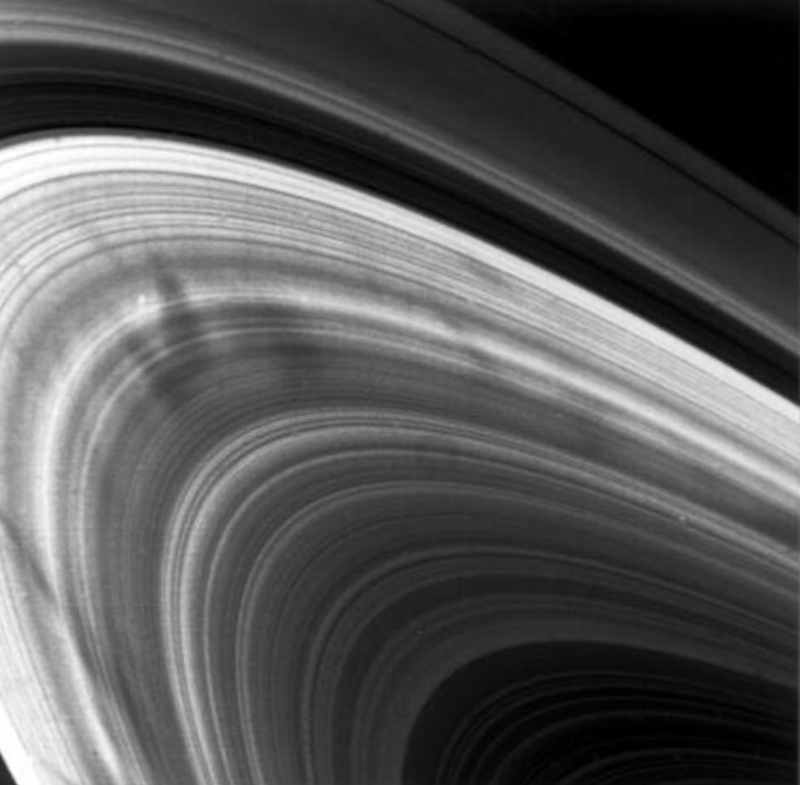
Hubblesite said on February 9, 2023, that the Hubble Space Telescope has been studying the “spokes” in Saturn’s rings. The spokes – which resemble the spokes on a bicycle – aren’t there all the time. They’re a seasonal phenomenon and can appear dark or light depending on the illumination and viewing angles. We see them only in the years preceding and following Saturn’s equinoxes.
The autumnal equinox for Saturn’s northern hemisphere will arrive on May 6, 2025. But the Hubble Space Telescope can already see the spokes.
And they’ll become more prominent as the Saturn’s equinox approaches.
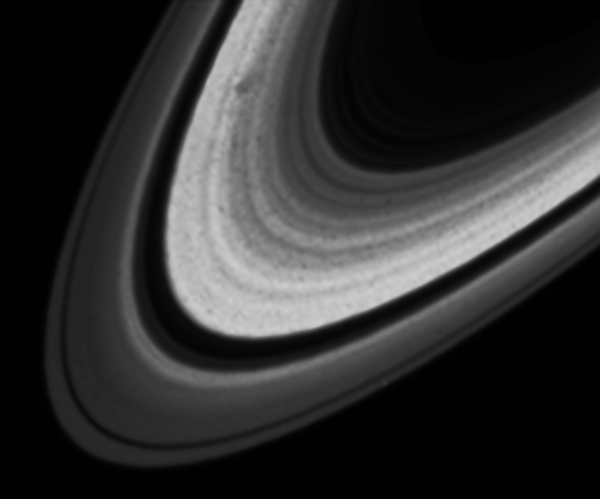
The mystery unfolds
It was exciting in 1981, when Voyager 2 sent back the image at the top of this page. Saturn’s rings has spokes! Who knew? We didn’t know then that the spokes are seasonal. Voyager 2 just swept past, after all, and then sped on. For the knowledge of the spokes’ seasonality, we needed a space telescope – like Hubble – that could see the rings from afar. And indeed, the Hubble Space Telescope occasionally observed the ring spokes throughout the late 1990s.
But the spokes gradually faded, as the season on Saturn changed.
Then in 2004, the Cassini mission arrived at Saturn and stayed in orbit around it until 2017. It sent back many wonderful images. And, relatively quickly, Cassini did show that the spokes weren’t caused by gravitational interactions with Saturn, or its moons or the tiny moonlets that make up Saturn’s rings. In 2005, Cassini confirmed the spokes are likely related to the Saturn’s magnetic field. A theory emerged that charged dust particles, suspended above and below the rings, were interacting with Saturn’s magnetic field.
If that’s true, then it’s possible to understand how the spokes rotate with Saturn’s interior spin. But is it true?
Now it’s spoke season again. Cassini is gone, crashed into Saturn’s cloud tops at its mission end in 2017. But Hubble is still going strong. And, surely, over the next few years, not just Hubble but also the new Webb Space Telescope will be seeking clues to Saturn’s spoke mystery.
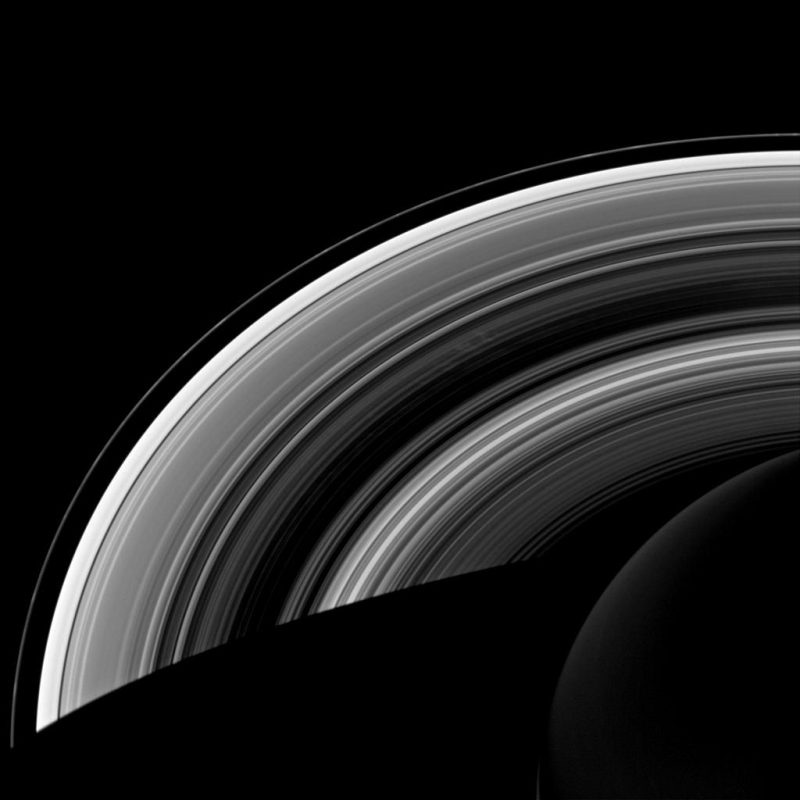
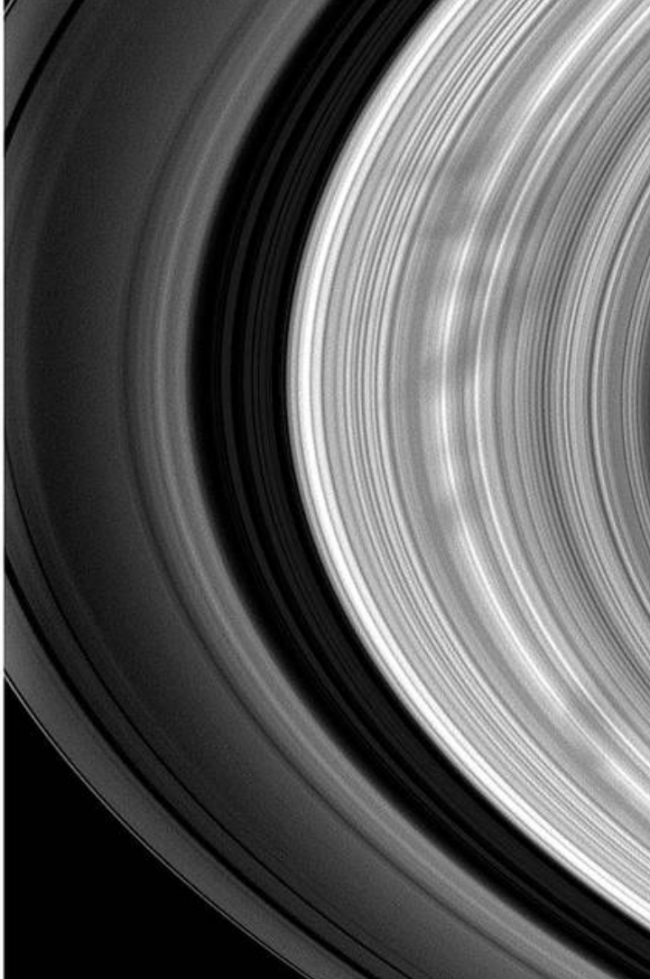
More spoke detail
Hubblesite explained:
Like Earth, Saturn is tilted on its axis and therefore has four seasons, though because of Saturn’s much larger orbit, each season lasts approximately seven Earth years. Equinox occurs when the rings are tilted edge-on to the sun. The spokes disappear when it is near summer or winter solstice on Saturn (when the sun appears to reach either its highest or lowest latitude in the northern or southern hemisphere of a planet).
As the autumnal equinox of Saturn’s northern hemisphere on May 6, 2025, draws near, the spokes are expected to become increasingly prominent and observable.
The suspected culprit for the spokes is the planet’s variable magnetic field. Planetary magnetic fields interact with the solar wind, creating an electrically charged environment (on Earth, when those charged particles hit the atmosphere this is visible in the northern hemisphere as the aurora borealis, or northern lights). Scientists think that the smallest, dust-sized icy ring particles can become charged as well, which temporarily levitates those particles above the rest of the larger icy particles and boulders in the rings.
Spokes in the rings of other worlds?
Of the various ringed worlds in our solar system, Saturn has the widest and easiest-to-see rings. But scientists want to know if spokes can and/or do occur at other ringed planets. Amy Simon, who is a senior planetary scientist at NASA and head of NASA’s Hubble Outer Planet Atmospheres Legacy (OPAL) program, said the spokes are:
… a fascinating magic trick of nature we only see on Saturn … for now at least.
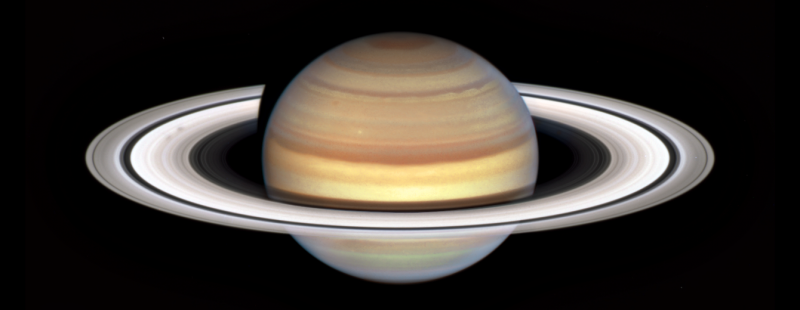
Bottom line: Spoke season on Saturn comes in cycles centered on Saturn’s equinoxes, which happen only about every 15 years. It’s happening now!
The post It’s spoke season on Saturn! first appeared on EarthSky.
from EarthSky https://ift.tt/VqIgFxv

Hubblesite said on February 9, 2023, that the Hubble Space Telescope has been studying the “spokes” in Saturn’s rings. The spokes – which resemble the spokes on a bicycle – aren’t there all the time. They’re a seasonal phenomenon and can appear dark or light depending on the illumination and viewing angles. We see them only in the years preceding and following Saturn’s equinoxes.
The autumnal equinox for Saturn’s northern hemisphere will arrive on May 6, 2025. But the Hubble Space Telescope can already see the spokes.
And they’ll become more prominent as the Saturn’s equinox approaches.

The mystery unfolds
It was exciting in 1981, when Voyager 2 sent back the image at the top of this page. Saturn’s rings has spokes! Who knew? We didn’t know then that the spokes are seasonal. Voyager 2 just swept past, after all, and then sped on. For the knowledge of the spokes’ seasonality, we needed a space telescope – like Hubble – that could see the rings from afar. And indeed, the Hubble Space Telescope occasionally observed the ring spokes throughout the late 1990s.
But the spokes gradually faded, as the season on Saturn changed.
Then in 2004, the Cassini mission arrived at Saturn and stayed in orbit around it until 2017. It sent back many wonderful images. And, relatively quickly, Cassini did show that the spokes weren’t caused by gravitational interactions with Saturn, or its moons or the tiny moonlets that make up Saturn’s rings. In 2005, Cassini confirmed the spokes are likely related to the Saturn’s magnetic field. A theory emerged that charged dust particles, suspended above and below the rings, were interacting with Saturn’s magnetic field.
If that’s true, then it’s possible to understand how the spokes rotate with Saturn’s interior spin. But is it true?
Now it’s spoke season again. Cassini is gone, crashed into Saturn’s cloud tops at its mission end in 2017. But Hubble is still going strong. And, surely, over the next few years, not just Hubble but also the new Webb Space Telescope will be seeking clues to Saturn’s spoke mystery.


More spoke detail
Hubblesite explained:
Like Earth, Saturn is tilted on its axis and therefore has four seasons, though because of Saturn’s much larger orbit, each season lasts approximately seven Earth years. Equinox occurs when the rings are tilted edge-on to the sun. The spokes disappear when it is near summer or winter solstice on Saturn (when the sun appears to reach either its highest or lowest latitude in the northern or southern hemisphere of a planet).
As the autumnal equinox of Saturn’s northern hemisphere on May 6, 2025, draws near, the spokes are expected to become increasingly prominent and observable.
The suspected culprit for the spokes is the planet’s variable magnetic field. Planetary magnetic fields interact with the solar wind, creating an electrically charged environment (on Earth, when those charged particles hit the atmosphere this is visible in the northern hemisphere as the aurora borealis, or northern lights). Scientists think that the smallest, dust-sized icy ring particles can become charged as well, which temporarily levitates those particles above the rest of the larger icy particles and boulders in the rings.
Spokes in the rings of other worlds?
Of the various ringed worlds in our solar system, Saturn has the widest and easiest-to-see rings. But scientists want to know if spokes can and/or do occur at other ringed planets. Amy Simon, who is a senior planetary scientist at NASA and head of NASA’s Hubble Outer Planet Atmospheres Legacy (OPAL) program, said the spokes are:
… a fascinating magic trick of nature we only see on Saturn … for now at least.

Bottom line: Spoke season on Saturn comes in cycles centered on Saturn’s equinoxes, which happen only about every 15 years. It’s happening now!
The post It’s spoke season on Saturn! first appeared on EarthSky.
from EarthSky https://ift.tt/VqIgFxv

Aucun commentaire:
Enregistrer un commentaire